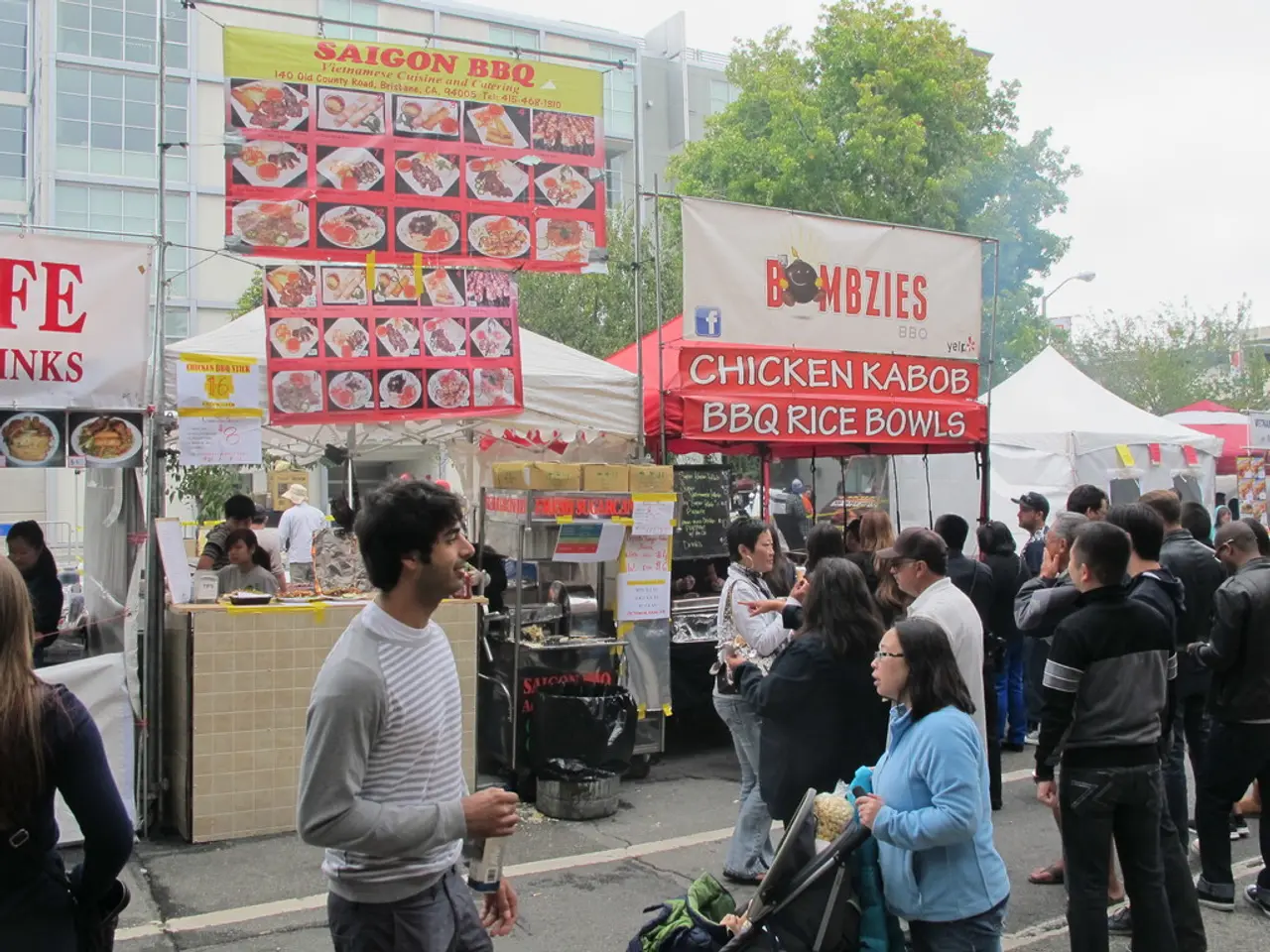Imposing a 10% tariff on BRICS countries due to perceived anti-American sentiment announced by Trump
In the ongoing saga of US-BRICS trade relations, tensions have reached a new high following a threat by former US President Donald Trump. On July 7, 2025, during the BRICS summit in Brazil, Trump announced his intention to impose an additional 10% tariff on any country that supports what he labelled as the "anti-American" policies of the BRICS group.
The announcement came as the deadline for the pause on Trump's new tariffs was approaching (July 9). At the time of the announcement, Trump had confirmed tariff deals with three countries: the United Kingdom, China, and Vietnam; it remains unclear if these deals are directly related to the BRICS threat or part of a broader trade strategy.
The threat of additional tariffs is now a central concern at the ongoing BRICS summit, with leaders responding to the US move by signing a joint declaration emphasizing "Strengthening Global South Cooperation for More Inclusive and Sustainable Governance." However, specific retaliatory trade measures from BRICS countries in response to Trump's tariff threat have not yet been detailed.
Trump's warning marks a departure from his earlier cautions against the creation of a new BRICS currency or any efforts to undermine the US dollar. The BRICS leaders, for their part, have been working on strengthening their economic ties. The BRICS Payment Task Force has identified possible pathways to support the continuation of discussions on the potential for greater interoperability of BRICS payment systems.
India, a key player in the BRICS group, has been working towards an alternative trade mechanism in national currencies, aimed at protecting against geopolitical vulnerabilities, not the same as de-dollarisation. Indian negotiators have proposed lowering tariffs in several sectors, but also seek sustained preferences in areas such as labor-intensive items and protection in agriculture and dairy.
The BRICS leaders have also shown support for India's global terror convention at the summit. The BRICS declaration for 2025 does not mention a common BRICS currency, which is no longer being seriously pursued.
The BRICS grouping, which includes Brazil, China, Russia, South Africa, India, Saudi Arabia, Egypt, United Arab Emirates, Ethiopia, and Indonesia, has welcomed the BRICS New Development Bank's expansion of local currency financing. This move is seen as a step towards reducing dependence on the US dollar.
As the situation unfolds, the BRICS nations are reinforcing cooperation among themselves in response to what they perceive as US pressure. The specific details about the tariffs that will be proposed in the letters Trump's regime will hand out to several countries, starting on Monday, are not yet clear. The future of US-BRICS trade relations hangs in the balance.
[1] Source: Reuters, Bloomberg, BBC News, The Economic Times.
- The ongoing US-BRICS trade tensions escalated further with Trump's announcement of a 10% tariff on countries supporting anti-American policies, days before the pause on his new tariffs expired.
- Trump's proposed tariffs have become a primary focus at the ongoing BRICS summit, with leaders countering by signing a joint declaration emphasizing global south cooperation.
- Despite the tariff threat, the BRICS leaders are strengthening their economic ties, with the BRICS Payment Task Force identifying possible ways to support interoperability of BRICS payment systems.
- India, a key BRICS member, is pursuing an alternative trade mechanism in national currencies to protect against geopolitical vulnerabilities, while also seeking lower tariffs in several sectors and sustained preferences in labor-intensive items and agriculture.
- The BRICS leaders have also shown support for India's global terror convention and welcomed the BRICS New Development Bank's expansion of local currency financing as a step towards reducing dependence on the US dollar.
- As the future of US-BRICS trade relations remains uncertain, the BRICS nations are reinforcing cooperation among themselves in response to perceived US pressure, awaiting the details of the tariffs proposed in letters to be handed out by Trump's regime.








